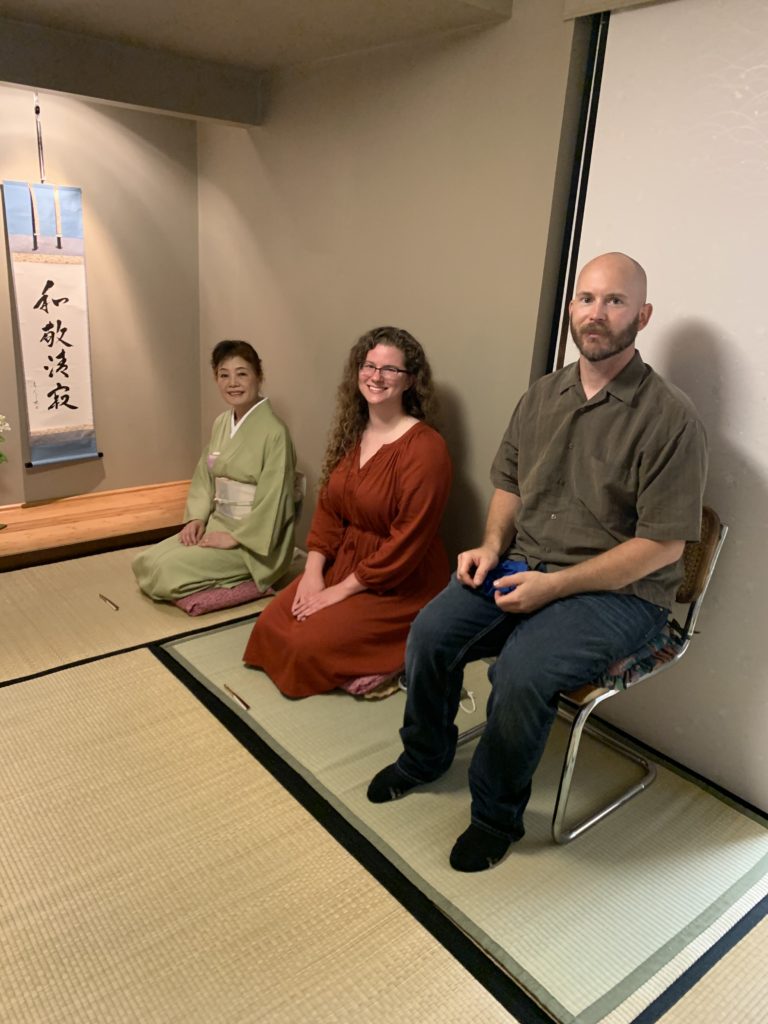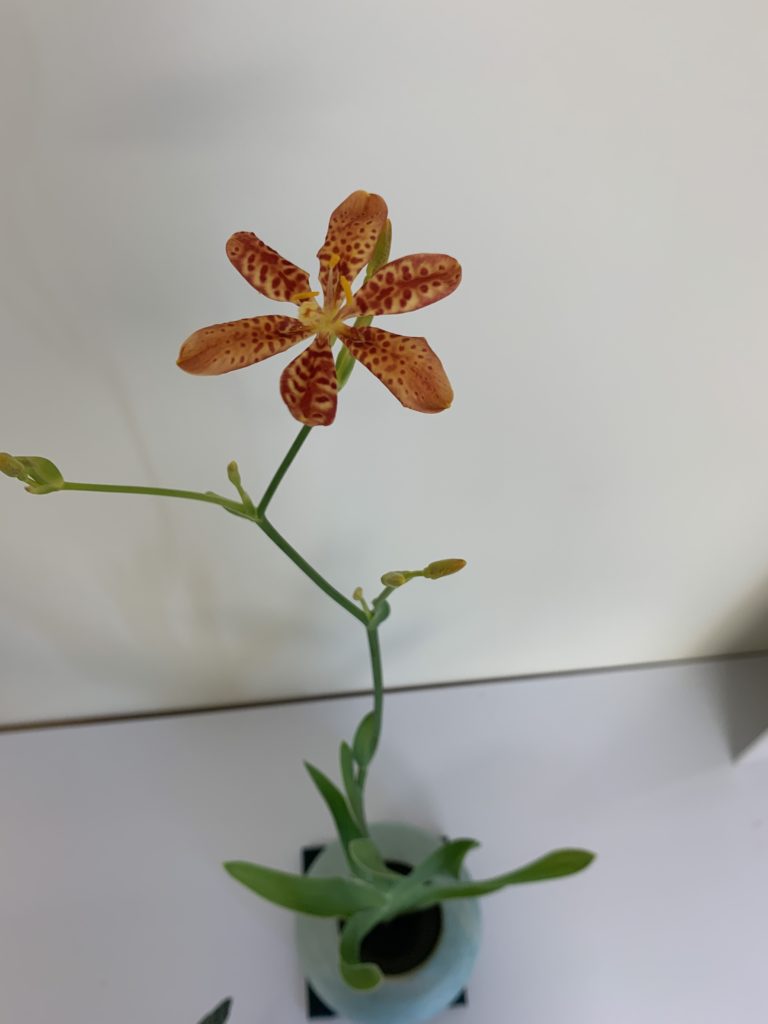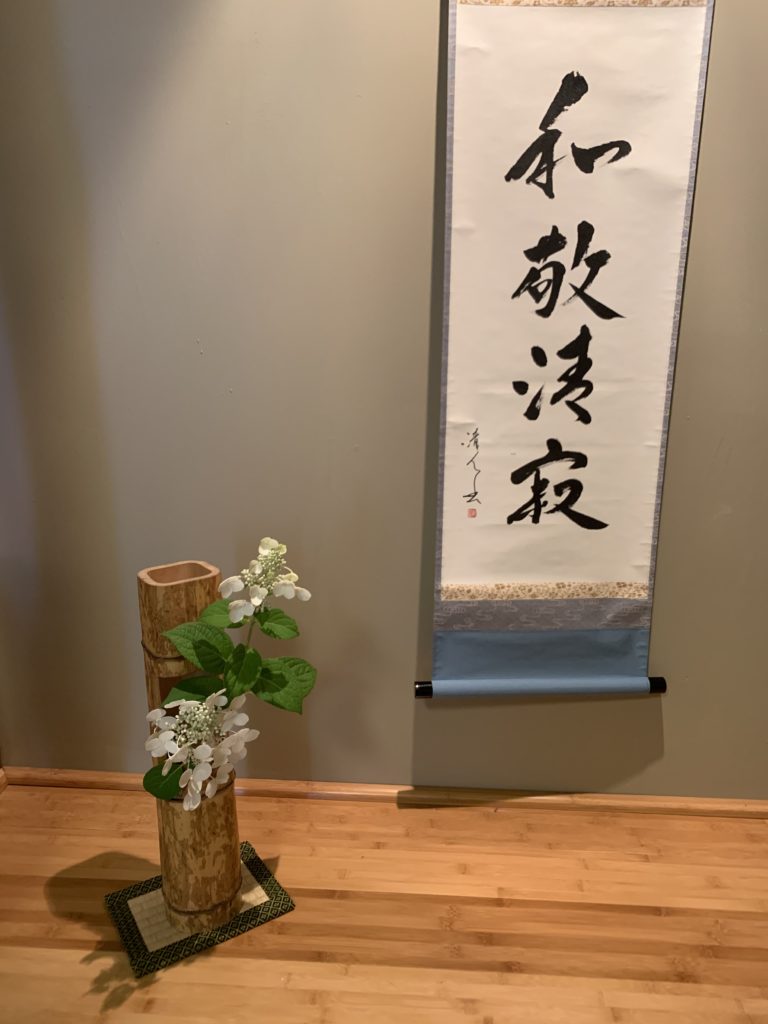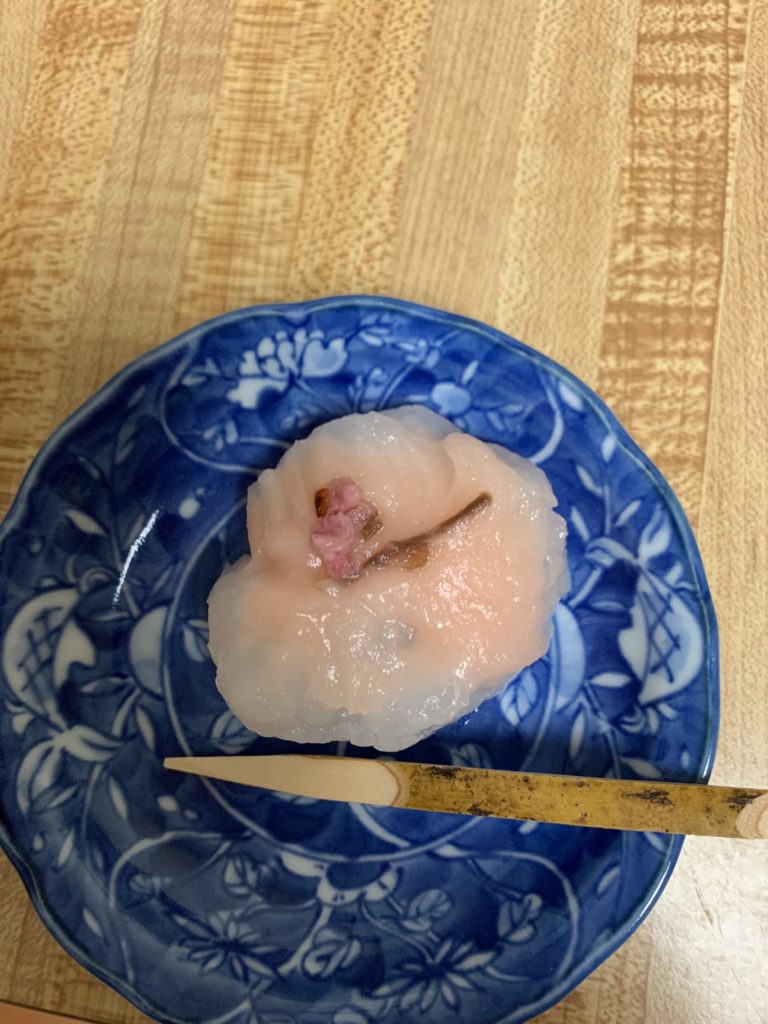今日は、生徒さんの友人で、陶芸をされている方とガールフレンドを我が家の茶室『純心庵』にお招きしました。この方は抹茶茶碗もつくられているのですが、実際にお茶のお点前で点てたお抹茶を飲んだことがないということでしたので、生徒さんが薄茶風炉点前でお茶をお点てしました。
This week we had two guests, a potter and his girlfriend, in our Junshin-an tearoom. Although he has made tea bowls, he has never been in the tearoom, so we invited him to usucha furo teamae, a tea ceremony performed by one of our students.

玄関に飾った赤い花は京都祇園祭の厄除けの花「檜扇」(ひおうぎ)です.生徒さんの家の庭に今朝、初めて一輪開いた貴重な花です。コロナの厄除けになりますように。
By the front door, I placed the this year’s first bloom of a hiougi (black lily), which came from my student’s yard, hoping this plant will help overcome the pandemic. Hiougi is believed to ward off evils spirits and has been used for centuries in Gion festivals as a protective charm in Kyoto, Japan.

掛け軸は『和敬清寂』。茶の湯の四つの精神を説明させていただきました。お花は、庭の白紫陽花を竹の花入れに挿しました。
Placed next to white hydrangeas was the scroll with the word wakeiseijaku consisting of four calligraphic characters (harmony, respect, purity, and tranquillity). These are the four principles of the tea ceremony.

御菓子は手作りの『葛桜』です。失敗作です。。。
I made kuzuzakura (Japanese arrowroot cake with a cherry blossom) for this occasion, it tasted fine but unfortunately didn’t look as pretty as I hoped.

初めてお茶を体験されたお客様に、感想を尋ねましたところ「必要なもの以外何もないシンプルな空間の中で、無駄のない動きのお点前を見ていて、スピリチュアルでピースフルな雰囲気を感じ不思議な気持ちになり心が癒されました。」と答えてくださいました。これこそ、お茶を学ぶ私達が目指ざすものだと、とても嬉しく思いました。
After the ceremony, the guests said they felt calm and peaceful looking at the flawless movement of the tea ceremony in its very simple setting. There is nothing more pleasurable to hear than these kind of comments since these feelings are exactly the goal of our weekly practice.